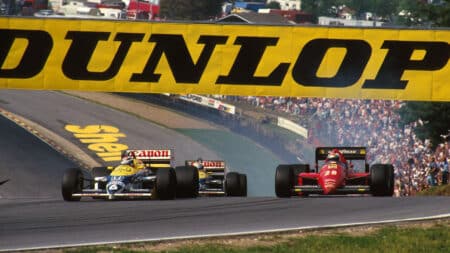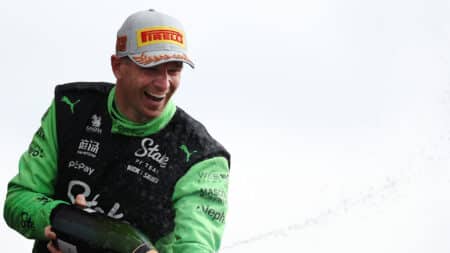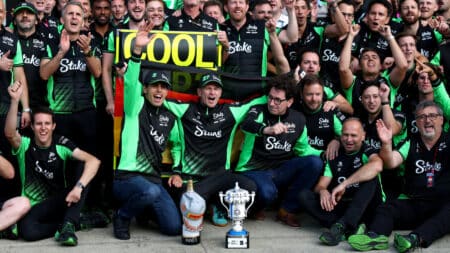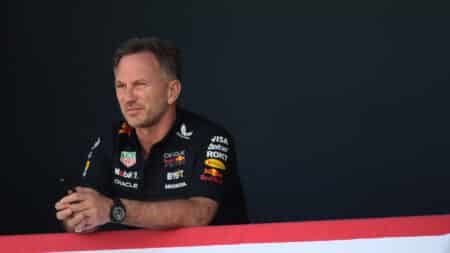
Brands Hatch: F1's beloved countryside amphitheatre
On this day in 1964, the roar of F1 engines echoed through the Kent countryside for the first time, as Brands Hatch made its debut on the world stage
Forty years ago next Monday, Jackie Stewart contested his 99th Grand Prix. A messy affair, it did not sit well with the neat, spring-heeled Scot. The inaugural Safety Car in Formula 1 had scrambled the lap charts and not everybody was convinced that McLaren’s Peter Revson was the true winner of the 1973 Canadian GP. The majority, however, agreed in passing that Stewart’s fifth place was genuine.
His had been a low-key performance. With Goodyear wets that were no match during the early stages for the Firestones on Niki Lauda’s BRM, and a Tyrrell unsettled by Mosport’s bumps no matter what the prevailing conditions, Stewart, just a fortnight after securing in thrilling fashion his third world title, was relieved merely to reach the finish on this occasion – and that his team-mate François Cevert had escaped lightly from a heavy head-on into the Armco.
The charming, educated Frenchman had hopped (literally) from the wreckage to remonstrate with his accident’s (and the much-maligned Safety Car’s) catalyst before succumbing to the restraining force of the marshals and the pain from his ankles. He wasn’t to know that the driver – Jody Scheckter – whom he was so keen to thump had been targeted as his team-mate for 1974.
That’s because Stewart had kept his April vow to retire at the season’s end close to his chest. Not even his wife Helen, his rock, knew; Jackie didn’t want her to fret (more than she already did) while ticking off the days. Only ‘Uncle Ken’ and Ford’s smoothest operator, Walter Hayes, the shapers of his career, were kept in this tightest of loops.
Typical Jackie. He eschews quiet but oozes dignity. His trews are loud but he is undoubtedly stylish. And though a man in a permanent hurry, he refuses to be rushed and will pause for thought. That’s how good and lasting decisions are made.
Just one race into his single-seater career – a runaway Formula 3 win in the wet at Snetterton in 1964 – Cooper had approached him about F1. He politely declined. Later that same season, his F3 domination having continued apace, Lotus boss Colin Chapman made him a similar but far more tempting offer. Stewart refused that, too – and instead accepted a drive with the semi-works Formula 2 outfit run for Lotus by Ron Harris; he finished second straight off the bat, at the daunting Clermont-Ferrand circuit.
By the time he made his F1 debut with Lotus in December, as a replacement for Jim Clark – who had hurt his back in a snowball fight at Cortina d’Ampezzo! – Stewart had signed for BRM. He knew Lotus was the quicker – he qualified its 33 on pole and won the second heat of that non-championship Rand GP at Kyalami – but he wanted to learn with a team historically better at providing two equal cars, in terms of strength, safety and speed, and without the pressure of being benchmark Clark’s team-mate.
It worked: he scored a point on his world championship debut, won at his fourth attempt with BRM – Silverstone’s International Trophy – and at Monza in September outmanoeuvred team leader Graham Hill to register his first world championship victory. And even though the second half of 1966 and pretty much the whole of his 1967 were ruined by the Bourne-based team’s flawed H16 engine project, it only made him stronger.
Enzo Ferrari came a-calling – and mulishly called Jackie English! – but Stewart calmly stuck with what he knew, i.e. Ken Tyrrell, and the pre-eminence of the Ford Cosworth V8; the gamble was their insertion of this engine into a Matra chassis.
All Stewart ever asked for was a competitive car that he could trust. Given secure circumstances, he would do the rest: find a couple of tenths in practice and race brilliantly. His precision-fit MS80 was not as fast or loose as Jochen Rindt’s Lotus 49, but by the time the Austrian had at last broken his F1 duck, in the 1969 United States GP at Watkins Glen, the Scot had tucked another six GP victories, plus a maiden world title, down his sock.

Stewart leads Rindt at Silverstone, 1969
Stewart’s subsequent switch to an unproven March for the start of 1970, an unlikely move primed by the big guns of French industrial politics and triggered by the sonorous Matra V12’s lack of torque, led to another brave decision that, in turn, did not lack for self-confidence: Tyrrell’s morphing from team to constructor.
Chassis 001, designed in secret at Derek Gardner’s home, understandably took several cues from MS80. Quick from the off, it was, however, nobbled by niggles. 003 had no such problems in 1971. Silencing the boisterous 12-cylinders, Stewart won his second title, while the taller Cevert used the longer 002 to score his only GP victory, at Watkins Glen.
Debonair Cevert had been on Stewart’s radar since they stared each other down exiting Thillois at the frantic conclusion of a manic F2 slipstreamer at Reims in 1969; Jackie blinked on that occasion. In 1970, after a very different kind of F2 dice in a heat at compact Crystal Palace – Jackie won this time – Stewart selflessly recommended his rival to Ken. And so a prince was born.
Lotus, in the shape of Emerson Fittipaldi’s black-with-gold-coach lines 72, was the quicker in 1972, while Stewart, by his own admission (to hospital), had been overdoing it: Can-Am (with Lola in 1971), Grands Prix and ETCC Capris. His lucrative Can-Am deal with McLaren was thus iced as he coolly took stock and made another crucial, far-reaching decision: F1 would be his be-all and end-all in 1973.
A master class ensued – and Cevert took careful, respectful note. Theirs was the best that an obvious number one and two can provide: glory with harmony. Cevert outqualified Stewart on occasion, and outraced him at times, too, but when Tyrrells 005 or 006, twitchily nimble in comparison to its rivals, was just the ticket, canny Stewart was first to the punch, the pole, the podium; three of his five victories came at the head of a 1-2. Cevert moved closer each time without ever overstepping the mark, and at Monza eased aside so that his leader, having charged from 19th after an early puncture, could become champion.
Stewart now craved to tie up any loose ends and set Tyrrell on the right course without him at its helm, such was/is his nature. Watkins Glen in October, therefore, was to have been so neat: his 100th and last GP.

Stewart in practice at Watkins Glen, 1973
Cevert, with his ankles taped and a new car beneath him, was quicker in practice, as he had been in Canada. It was he who took the fight to the 72s, the M23s and the BT42s, and to all the other young bucks: the Emmos, Ronnies, Jodys and Hunts of the next generation. Stewart, though pleased for his protégé, had no wish or plan fade out a few rows back, a few places down – but he might have had no choice; Cevert, off the leash, had grabbed the baton. Only for fate to immediately snatch it from him. With minutes remaining of Saturday morning’s running, he made a small error at The Esses and paid a huge price. Scheckter, first at the gruesome scene, would never again race in the uninhibited style that had marked him out as a man to watch, on all counts.
Stewart continued, as he had when Jim was killed, when Jochen was killed, when Piers was killed, when Bruce was killed. He’d been able to compartmentalise his mind in the past, pull out all the stops despite the dangers, his grief and his safety campaign. Not this time. He found a few hundredths in a handful of laps in the afternoon, but was only seventh-fastest in the session. Ken, who knew better than anyone, called a merciful halt and withdrew from the meeting.
Twenty-seven wins from 99 starts is a powerful mnemonic for how good Stewart was. Sadly, it’s also a strong reminder of the cruelty of his era.
Click here for more on Formula 1

On this day in 1964, the roar of F1 engines echoed through the Kent countryside for the first time, as Brands Hatch made its debut on the world stage

Nico Hülkenberg's long-awaited first podium at Silverstone came after a virtuoso drive, but it only came about thanks to one unforgettable qualifying lap in 2020, as Mark Hughes recalls

Nico Hülkenberg's first F1 podium followed a faultless British GP drive where he went against his team with strategy calls that proved crucial in wet weather at Silverstone. Here are the radio messages that show how he pulled it off

From shock Zoom calls to ruthless midnight firings, F1’s history is littered with team principals and executives who are in command one moment and unceremoniously sacked the next